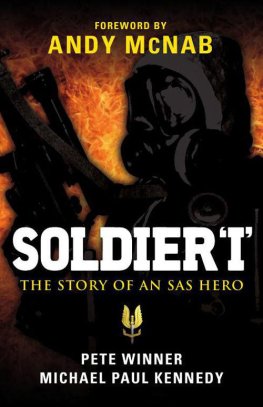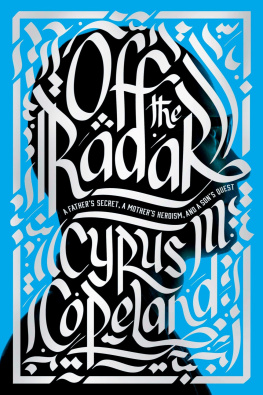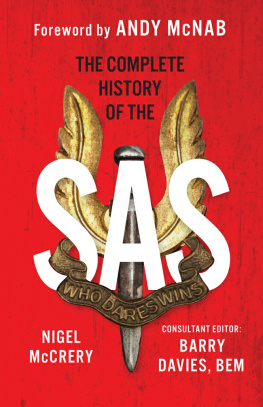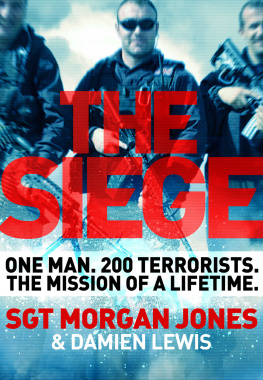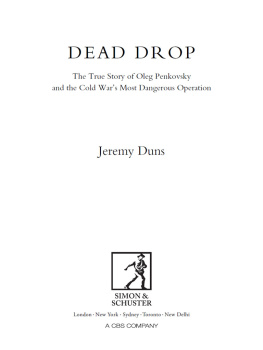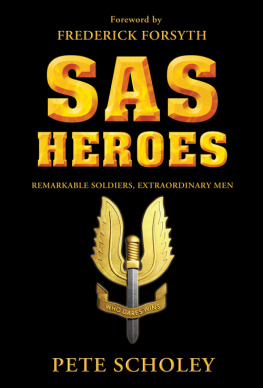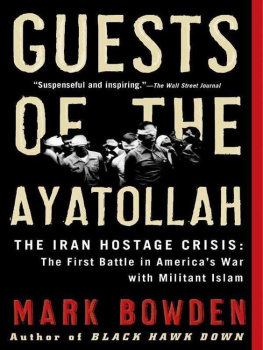During the Second World War, David Stirling, founder of the SAS, had just outlined to Field Marshal Montgomery an audacious plan for one single squadron of SAS to penetrate miles behind heavily fortified enemy lines to attack the Tripoli to Tobruk coastal road along a 400mile front. Montgomery paused for a moment, then turned to his staff officers and said: 'Gentleman, the boy Stirling is mad. Quite, quite mad. But in war, there is a place for mad people.'

THE STORY OF AN SAS HERO
PETE WINNER
MICHAEL PAUL KENNEDY

First published in Great Britain in 2010 by Osprey Publishing,
Midland House, West Way, Botley, Oxford, OX2 0PH, UK
44-02 23rd Street, Suite 205A, Long Island City, NY 11101, USA
E-mail:
2010 Osprey Publishing Ltd
All rights reserved. Apart from any fair dealing for the purpose of private study, research, criticism or review, as permitted under the Copyright, Designs and Patents Act, 1988, no part of this publication may be reproduced, stored in a retrieval system, or transmitted in any form or by any means, electronic, electrical, chemical, mechanical, optical, photocopying, recording or otherwise, without the prior written permission of the copyright owner. Enquiries should be addressed to the Publishers.
A CIP catalogue record for this book is available from the British Library
Print ISBN: 978 1 84603 995 9
ePub ebook ISBN: 978 1 84908 650 9
Michael Kennedy and Pete Winner have asserted their right under the Copyright, Designs and Patents Act, 1988, to be identified as the Authors of this Work.
All photographs not otherwise credited are from Pete Winner's collection.
Every attempt has been made by the Publishers to secure appropriate permissions for materials reproduced in this book. If there has been any oversight we will be happy to rectify the situation and a written submission should be made to the Publishers.
Front cover image courtesy Simon Roberts
Page layout by Myriam Bell Design, France
Typeset in Adobe Garamond
Originated by PPS Grasmere Ltd, Leeds, UK
Printed in China through Worldprint
10 11 12 13 14 15 10 9 8 7 6 5 4 3 2
For a catalogue of all books published by Osprey please contact:
NORTH AMERICA
Osprey Direct, c/o Random House Distribution Center
400 Hahn Road, Westminster, MD 21157, USA
E-mail:
ALL OTHER REGIONS
Osprey Direct, The Book Service Ltd., Distribution Centre, Colchester Road,
Frating Green, Colchester, Essex, CO7 7DW
E-mail:
Osprey Publishing is supporting theWoodland Trust, the UK's leading
woodland conservation charity, by funding the dedication of trees.
www.ospreypublishing.com
Osprey Publishing. Access to this book is not digitally restricted. In return, we askyou that you use it for personal, non-commercial purposes only. Please don't uploadthis pdf to a peer-to-peer site, email it to everyone you know, or resell it. OspreyPublishing reserves all rights to its digital content and no part of these productsmay be copied, stored in a retrieval system or transmitted in any form by any means,electronic, mechanical, recording or otherwise (except as permitted here), without thewritten permission of the publisher. Please support our ontinuing book publishingprogramme by using this pdf responsibly.
Foreword
I first met Pete (or Snapper as he was called then) in 1984. I had just joined the SAS at the age of 24, and had been sent out to join the rest of B Squadron in the jungles of South East Asia.
I'd only just been introduced to the rest of the troop and was enjoying a quick brew with them under the canopy, when Snapper and four of his mates came crashing through the jungle, looking for the new boy. It didn't take long for Snapper's torchlight to find me, and from the residual glow of the fire we were brewing our tea on, I got a vague glimpse of him: a tall, bearded guy, with a flat face and a nose broken so badly it seemed to be heading east when he was facing north. His accent was dramatic Northern, and he stretched the last word of the sentence he spat out at me, as he and his mates loomed over me in the darkness. 'You a fookin' Masonnnnnn?'
Snapper was obsessed; he was sure that the Freemasons were infiltrating the Regiment. It had become a running joke the troop had set up a 'lodge' in the jungle, where Snapper and his mates spent their evenings conducting spoof rituals with their trouser legs rolled up. That was my first meeting with the man who'd become Soldier 'I', and fortunately, I was able to reassure him that I hadn't been sent by the Masons on any kind of secret mission. But my first impression of Snapper was that he was as mad as box of frogs, and someone I would do well to keep away from.
The next time I came across Snapper was when our squadron was back in the UK and we were in training to join the counter-terrorist team. I spent quite a lot of time with him during those months as we practised our 'room clearing' skills in the training building in Hereford known within the Regiment as 'The Killing House'. The Killing House was the only place where the Regiment's assault teams were able to fire live ammunition, and it was here where I really began to see Snapper's skills first-hand. Of course, it turned out that there was a whole lot more to Snapper than I had first thought.
Snapper was, and is, a Regimental institution. An outstanding soldier, he was one of the SAS troopers who successfully stormed the Iranian Embassy in 1980. He also played an enormous role in the Falklands War in 1982. If that isn't enough, Snapper was also one of the pioneers of undercover operations in Northern Ireland. He tells it all here in his remarkable book.
But perhaps Snapper's greatest piece of soldiering took place in the battle of Mirbat, which occurred during Operation Storm the secret war fought by the British in Oman in 1972. Over 250 well-armed Communist insurgents attacked the isolated SAS base near the coastal resort of Mirbat, and Snapper (manning the machine gun) together with eight fellow SAS soldiers, chose to fight against overwhelming odds until reinforcements arrived. If the Communists had come to dominate this area, the whole of the Western world would have been held to ransom, since over half of the world's oil passes through the Straits of Hormuze, just off Oman in the Persian Gulf. But the nine men resisted fiercely, and pretty much won the war single-handedly. For this reason, Operation Storm remains one of the most famous actions ever carried out by the SAS, and to this day, is one of the Regiment's proudest moments.
But Snapper's skills don't stop there. Many of the undercover techniques that he helped to develop are still used by the Regiment today in their anti-terrorist operations. They certainly helped me tremendously during my two years in Northern Ireland as an undercover operator.
Snapper is a true innovator, and really pushed the boundaries of soldiering within the Regiment. It was always him who would say, 'Let's try it a different way,' or, 'Hang on a minute, what if we do it like this instead?' There's a real creativity to the art of combat, and Snapper has it in spades. Not only during training back in Hereford, but also out in the field where it really counts. Without people like Snapper, the Regiment would not be the same professional fighting force it is today.


